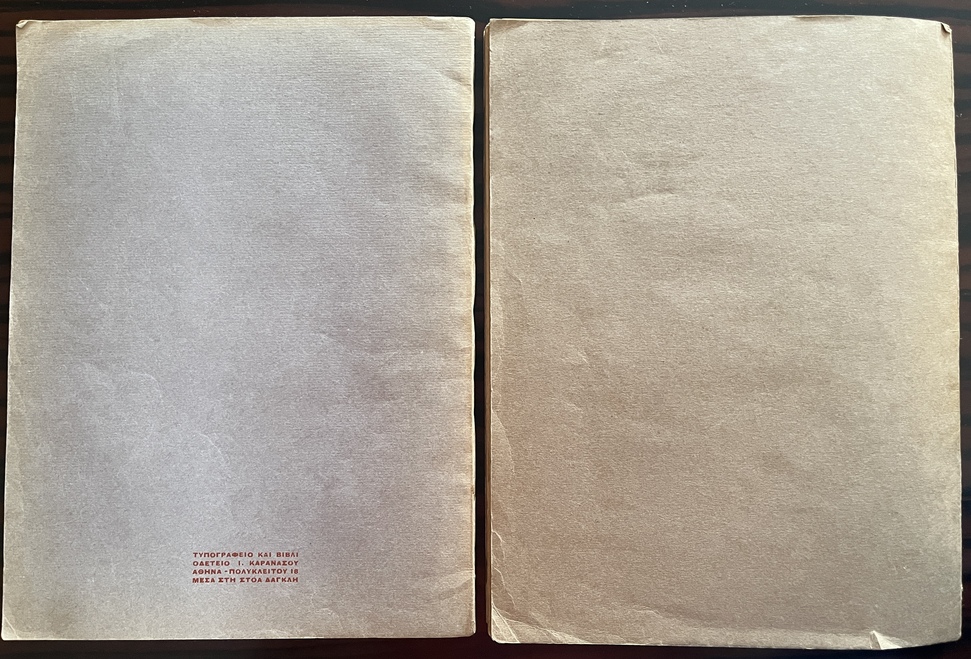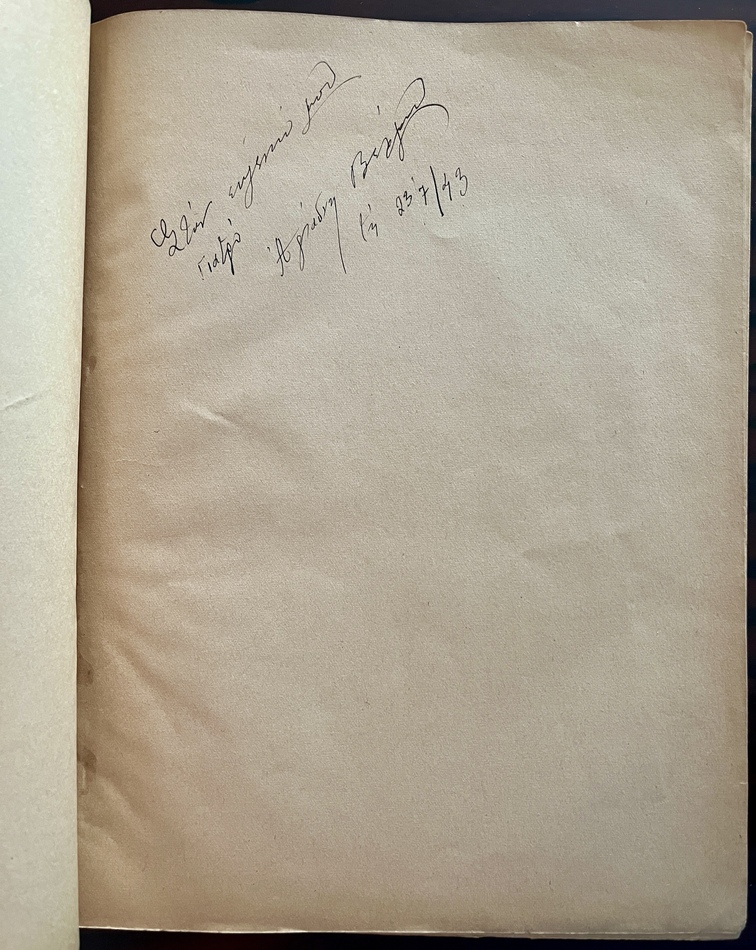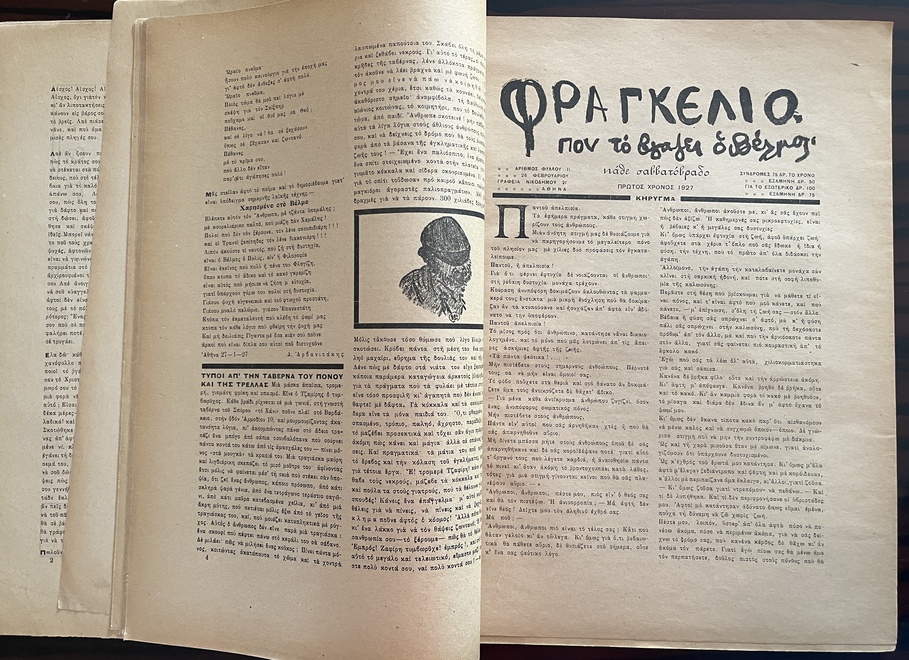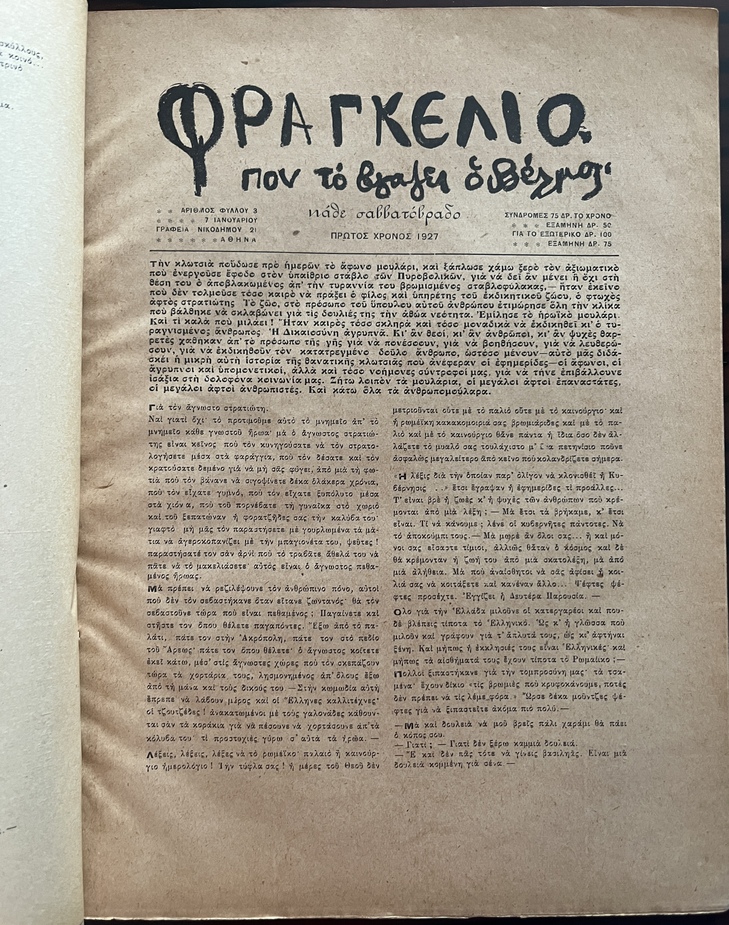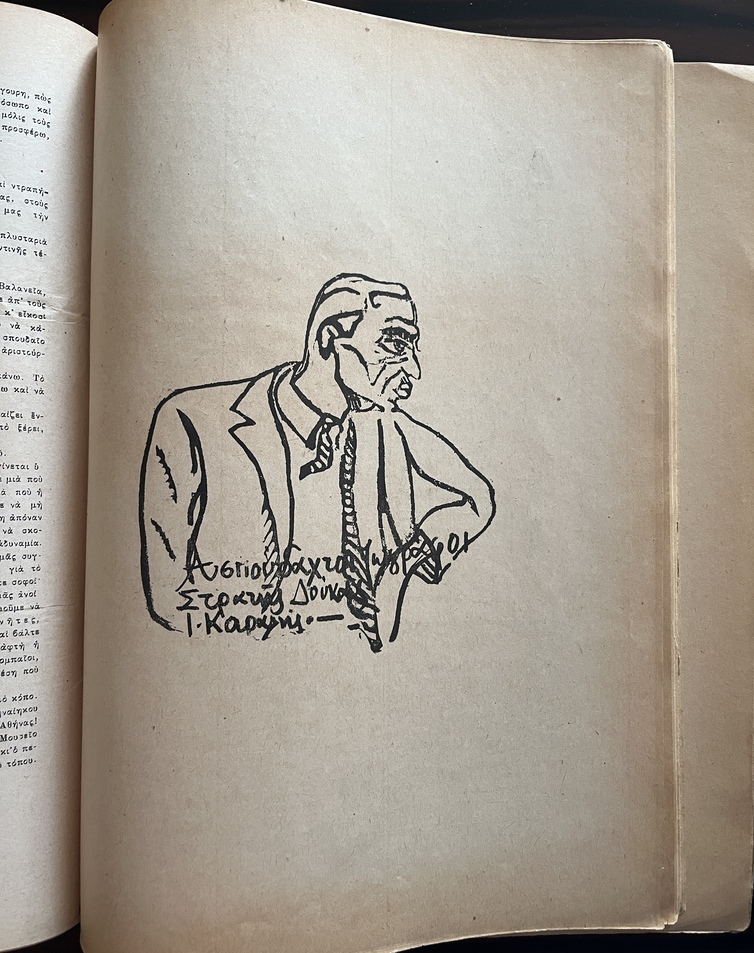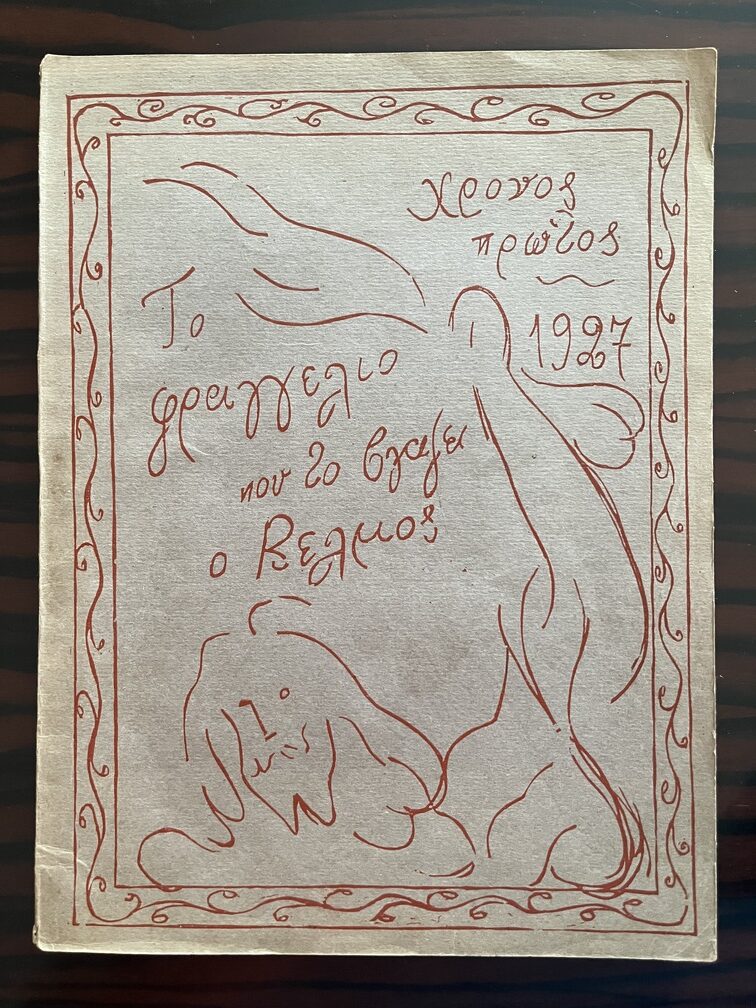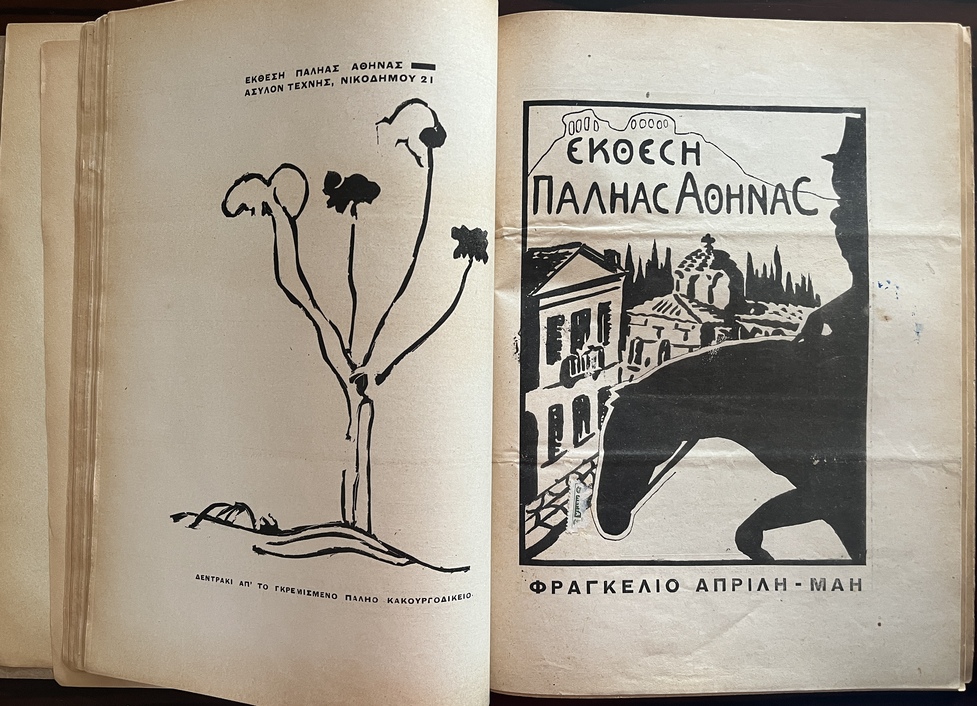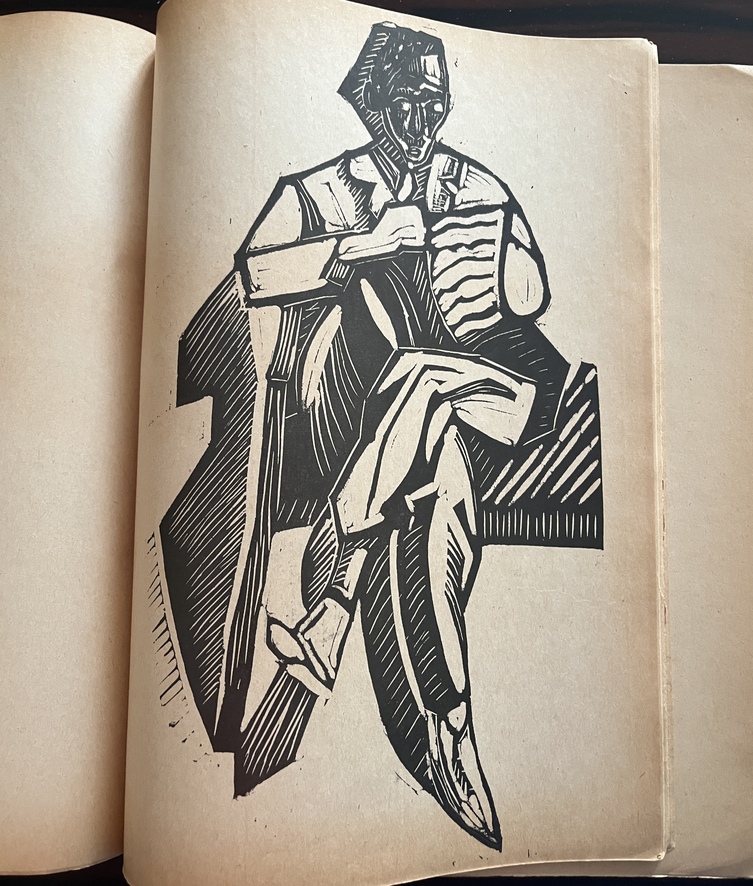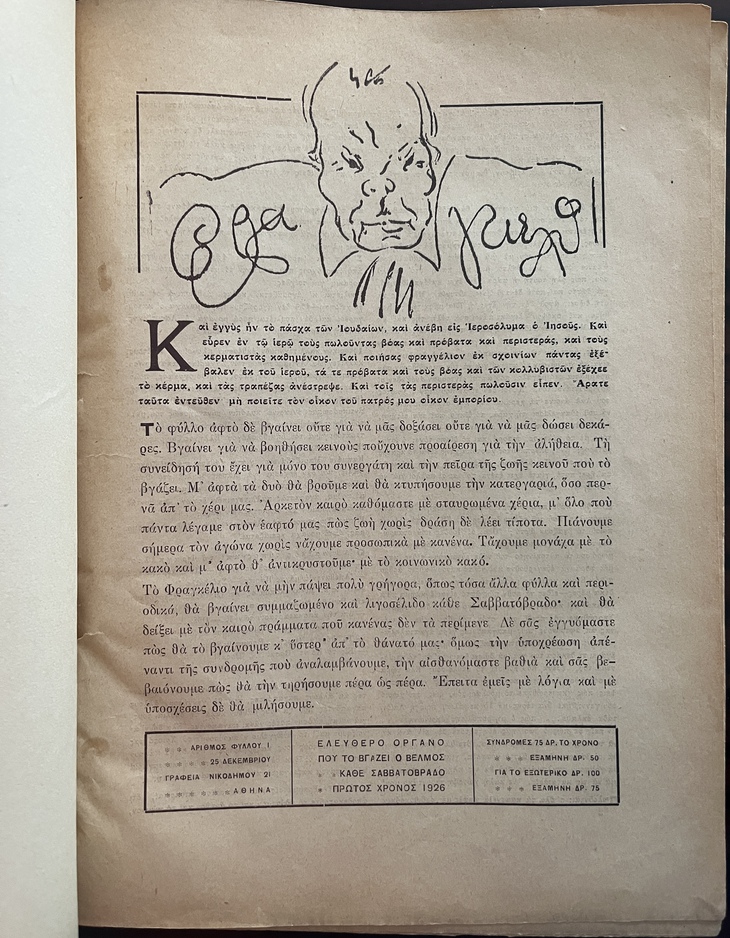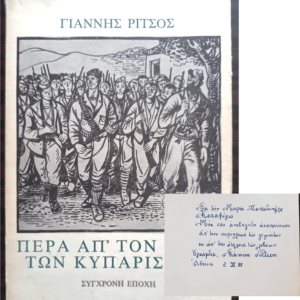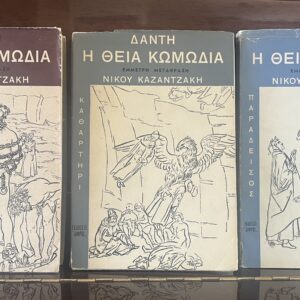Rare, 1927, 1928, 1929, SIGNED, 2 Books, Nikos Velmos, Frangelio, First Edition, Greek Avant-Garde Magazine
470.00€
Out of stock
Description
2 Volumes of
Greek Avant-Garde Art Magazine
To Frangelio (The Whip)
1. Το Φραγγέλιο – To Frangelio
που το βγάζει ο Βέλμος
Χρόνος Πρώτος
1927
Volume 1
The Whip
Published by Velmos
First Year
1927
Issues 1-52, weekly
2. Το Φραγγέλιο – To Frangelio
που το βγάζει ο Βέλμος
Χρόνος Β & Γ
1928, 1929
Volume 2
The Whip
Published by Velmos
Second & Third Year
1928, 1929
monthly
Self-Published by Nikos Velmos, Athens in 1927
Both books are signed and dedicated by Velmo’s sister Ariadni Velmou
Original Paper Binding
208 Pages (Volume 1)
208 Pages (Volume 2)
21.4 cm x 28.3 cm
First Edition
Nikos Velmos (1890 -1930) was a Greek actor, writer, painter, magazine publisher and art gallery founder. His work and ideas were an original blend of revolution, anarchy, socialism, Christianity and Greek avant-garde.
On December 25, 1926, he began publishing the magazine Frangelio, which contributed greatly to the intellectual life of Athens during his time and through which he also exercised intense criticism. His collaborators were Stratis Doukas, Fotis Kontoglou, Giannoulis Chalepas, Anastasios Drivas, Takis Papatsonis, Galatia Kazantzaki, Tefkros Anthias, etc. Initially, it was published as a four-page weekly newspaper, while in 1928 it was converted into a sixteen-page monthly. Its publication ended in the spring of 1929.
In addition to the main publication of Frangelio, in 1927, Velmos also published the Art Sheets of Frangelio, with portraits-monographs of Greek and international artists: Domenikos Theotokopoulos, Beethoven, Giannoulis Chalepas are just some of Velmos’ thematic publications-dedications for his “uneducated artists”, as he defined them but also as “uneducated” he defined himself. Unstoppable, Velmos upsets Athens for good and recharges his conflict with the ruling class, when in 1928 he opens an art space on the ground floor of his house, at 21 Nikodimou Street in Plaka. At the Art Asylum, a space designed by the architect Konstantinos Kakiouzis and the painter and decorator Johan Romanos, Nikos Velmos held exhibitions of well-known artists (Yiannoulis Chalepas and Dimitris Galanis), as well as educational exhibitions such as the one for Domenikos Theotokopoulos, with printed reproductions of works and copies created for the exhibition by well-known Greeks. In such an exhibition of “uneducated” artists in 1928, Yiannis Tsarouchis also exhibited for the first time. The promotion and presentation of untaught or untutored artists, like all the activities of the Art Asylum, had not a commercial but an artistic character.
Additional information
| Languages | Greek |
|---|


